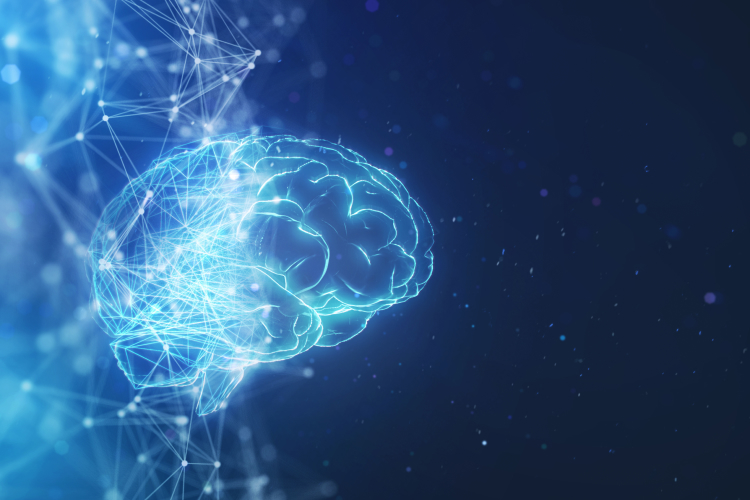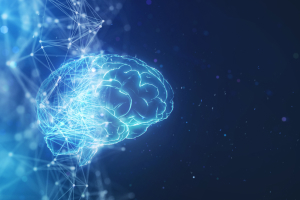Artificial Intelligence vs. Human Intelligence


As we witness the rapid evolution of technology, it’s natural to wonder about the future. Will Artificial Intelligence (AI) eventually outsmart human intelligence? Are we hurtling towards a world where machines call all the shots?
Understanding the relationship between AI and human intellect is crucial in today’s fast-paced technological world. It’s no longer just a concern for experts; it affects us all. As AI capabilities merge with our own, they’re reshaping society in various aspects, such as work, personal life, and ethics. Navigating this intertwined landscape is key to shaping our future wisely.
Defining Artificial Intelligence and human intelligence
Artificial Intelligence is the simulation of human intelligence processes by machines, especially computer systems.
It involves the development of algorithms that enable machines to perform tasks that typically require human-like intelligence, such as problem-solving, learning, perception and decision-making. Some branches of AI include:
- Machine learning (ML): Enables computers to learn from data and make predictions or decisions without explicit programming.
- Deep learning (DL): Utilizes neural networks with multiple layers to automatically learn hierarchical representations of data, especially in tasks like image and speech recognition.
- Natural language processing (NLP): Focuses on enabling computers to understand and generate human language, facilitating tasks like language translation and sentiment analysis.
- Computer vision: Enables computers to interpret and understand visual information, such as object recognition and image classification.
Human intelligence (HI) encompasses a broad range of cognitive abilities that enable individuals to perceive, understand, reason and solve problems. It includes:
- Reasoning: The ability to think logically, make inferences and draw conclusions based on available information.
- Perception: The process of interpreting sensory information from the environment, including sight, hearing, touch, taste and smell.
- Creativity: The capacity to generate novel ideas, solutions and artistic expressions through imagination and original thinking.
- Emotional intelligence: The ability to recognize, understand and manage one’s own emotions, as well as perceive and empathize with the feelings of others.
- Social intelligence: The skill of navigating social interactions, understanding social cues and adapting behavior accordingly.
What are the strengths of Artificial Intelligence?
AI learns via algorithms, which are a set of instructions that guide machines to learn independently and make decisions based on training and massive datasets. Think of AI as a supercharged brain capable of quickly processing information and learning from its experiences.
Over the years, AI has made huge leaps, changing lots of industries and how we live day-to-day. Think of virtual assistants like Siri and Alexa, self-driving cars or those spot-on recommendations you get on streaming sites—those are all examples of AI at work.
One of AI’s key strengths is its ability to tackle complex tasks with pinpoint accuracy. For example, in fields like healthcare and finance, AI-powered systems can analyze medical images, detect fraudulent activities, and even predict market trends with remarkable accuracy. This can save time and money, as well as open up space for innovation. Additional strengths of artificial intelligence include:
- Speed and scalability: AI algorithms process vast amounts of data at incredible speeds, surpassing human cognitive capacities. This makes tasks like data analysis and spotting patterns far easier and faster for machines.
- Consistency and reliability: AI systems perform repetitive tasks with high accuracy and consistency without fatigue or bias. From quality control to financial analysis, AI maintains unwavering precision, instilling confidence in its reliability.
- Automation: AI automates routine tasks across industries, streamlining workflows, reducing manual labor, and enhancing efficiency. From chatbots to autonomous vehicles, AI-driven automation drives cost savings and innovation, freeing human resources to focus on the bigger picture.
What sets human intelligence apart from AI?
The things that make us uniquely human—our capacity for creativity, empathy and emotional intelligence—set human intellect apart from AI. Unlike AI, which follows set rules and algorithms, humans possess the innate ability to think critically, adapt to new situations and express complex emotions.
Human intelligence isn’t just about crunching numbers or solving puzzles; it’s about the human experience. Connecting with others, understanding their perspectives and collaborating toward common goals are all skills. Whether through art, music, literature or scientific discoveries, human intellect continues to shape the world in deep and meaningful ways.
Human intelligence stands out in comparison to AI when it comes to:
- Creativity and innovation: Humans possess a unique ability to think outside of the box, generate novel ideas, and adapt to new situations with creativity. This innate creativity fuels innovation, driving breakthroughs in various fields.
- Emotional intelligence: Human intelligence is capable of empathy, social interaction, and emotional understanding. This emotional depth helps us build connections, work together, and navigate the complexities of human relationships.
- Adaptability and context awareness: Humans excel in quickly adapting to changing environments, drawing on our experiences, and using our understanding of context to solve problems. This flexibility lets us thrive in all kinds of situations and overcome challenges with resilience.
Complementary roles of AI and human intelligence
Rather than viewing AI and HI as competitors, it’s more productive to see them as complementary forces. While AI excels in tasks requiring speed, precision and data analysis, human intelligence brings creativity, intuition and ethical judgment to the table. By harnessing the strengths of AI and HI, we can unlock new opportunities for innovation and progress.
For instance, in medicine, AI can assist doctors in diagnosing diseases and developing personalized treatment plans based on a patient’s genetic makeup and medical history. However, human doctors remain irreplaceable when it comes to delivering empathetic care and understanding the emotional needs of patients and their families.
Here are some other ways that Artificial Intelligence and human intelligence complement each other:
- Collaborative problem-solving: AI provides data-driven insights, but human intelligence shines in complex and nuanced scenarios, offering fresh perspectives and innovative solutions.
- Human-AI interaction: Effective human-AI interaction hinges on seamless communication. When AI systems are user-friendly and easily navigable, it fosters synergy between humans and technology.
- Augmented intelligence: Augmented intelligence enhances human cognitive abilities and decision-making processes by leveraging AI. Rather than replacing human intellect, AI empowers individuals to make informed decisions, solve complex problems, and drive innovation.
By embracing the collaboration between AI and human intelligence, we unlock new potentials for problem-solving, interaction, and intelligence augmentation, leading to a future where technology enhances our lives while preserving our unique human values.
Challenges and limitations of AI vs. HI
As we further explore Artificial Intelligence vs human intelligence, we must recognize that both encounter challenges alongside their strengths. While AI holds promise for improving efficiency and enhancing our quality of life, it also introduces ethical concerns such as bias and privacy issues. Responsible AI governance is essential to address these issues effectively.
Additionally, while AI demonstrates remarkable capabilities in tasks requiring speed and precision, it falls short in areas that require complex decision-making, emotional understanding and creativity compared to human intelligence.
In contrast, human intelligence faces its own set of challenges. Human biases and errors in decision-making can lead to flawed judgments, while the subjective nature of human cognition adds layers of complexity to understanding and addressing societal issues.
To navigate these challenges, transparency, accountability and inclusivity must be prioritized in both AI development and human decision-making processes. By integrating diverse perspectives and ethical frameworks into designing and implementing AI systems, we can ensure that AI and HI work together to serve the common good and uphold fundamental human values.
Shape human-AI interaction with Maryville University’s AI programs
As we navigate the complex landscape of AI and HI, one thing is clear: the future belongs to those who embrace the power of collaboration and innovation. By harnessing the synergies between artificial and human intelligence, we can pave the way for a brighter, more inclusive future where technology enhances our lives without overshadowing our humanity.
Explore Maryville University’s online Master of Science in Artificial Intelligence and AI certificate programs to become a leader in shaping the future of human-AI interaction in this dynamic field. These programs offer a comprehensive curriculum to equip students with the knowledge, skills, and ethical frameworks needed to navigate the complexities of AI and HI.

